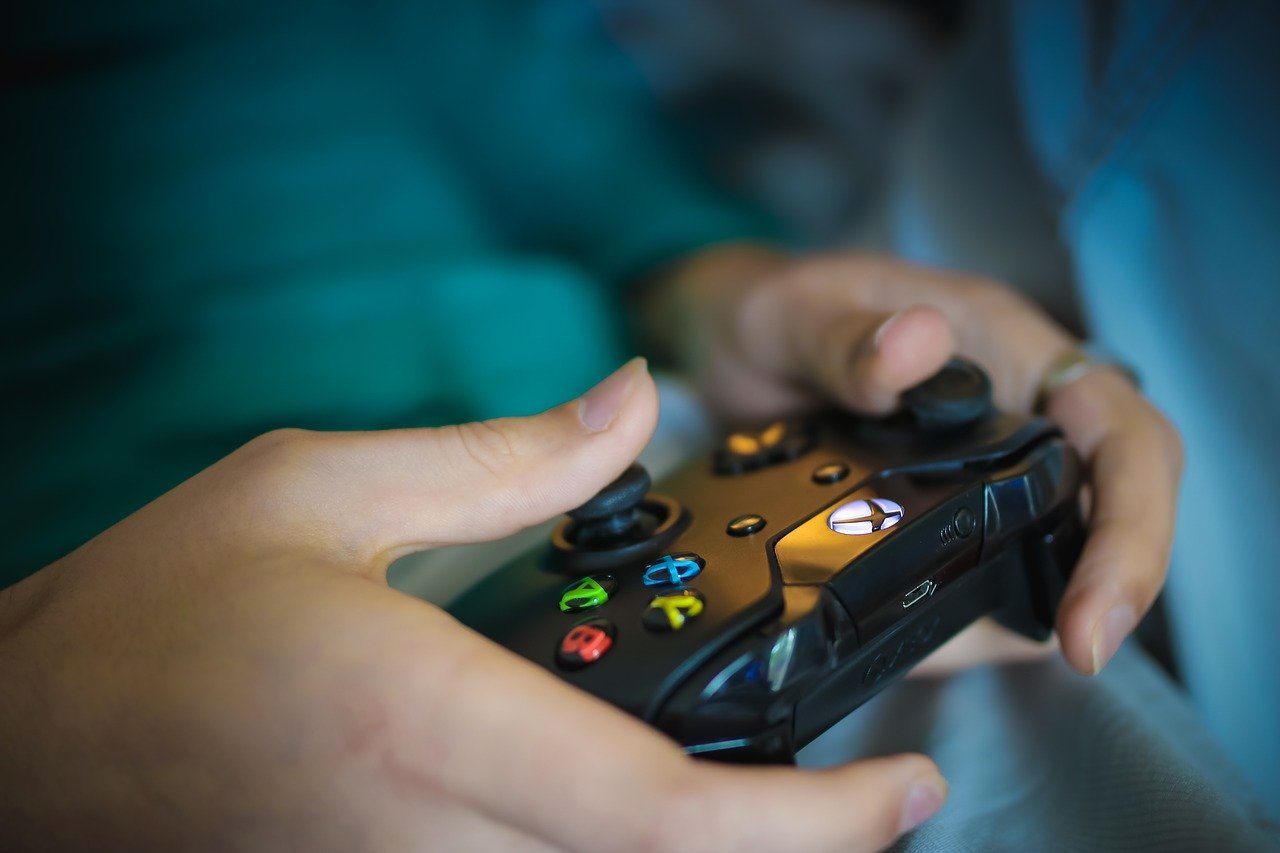Using the survey data, measures of loneliness and panic disorder were identified as the effects of internet gaming disorder. This paper explores the impact and effect of internet gaming disorder on individuals (adults) during the coronavirus lockdown period. 30 participants across India over the age of 18 years were tested in a purposive sampling method using google docs as an online platform for data collection. The results tested for correlation reveals that the internet gaming disorder sure has a significant positive correlation and effect on the two factors loneliness (0.580**, P< 0.01) and panic disorder (0.450*, p< 0.05). These findings may extend to the concepts of relationships between loneliness, panic disorder and excessive gaming, which were seen fit as the two rising problems among during the Covid-19 lockdown period.
The COVID-19 outbreak and the nationwide lockdown have had a pronounced impact across industries. Besides lesser economic activity and lowering consumption, the pandemic has also led to behavioural and lifestyle changes in people. Coronavirus is a novel virus named for the crown-like spikes that protrude from its surface. The Coronavirus can infect both animals and people and can cause a range of respiratory illnesses from the common cold to more dangerous conditions like Severe Acute Respiratory Syndrome, or SARS (Arakelyan, 2020). Due to the severity of this pandemic that has engulfed the entire country in a prolonged lockdown since March 2020 and affected the livelihood of 1.3 billion people, people have now resorted to various recreational methods to keep their minds calm and distracted from the severities. However, not all activities have a positive outcome. One such activity is video games and especially, online gaming. Computer and video games have increasingly become a popular form of entertainment and have replaced more traditional games as leisure activities among adolescents and adults. Today’s computer and video games are enjoyed by players all ages and backgrounds, and they spend a good part of their leisure time playing computer games. Day by day, the numbers of computer and video game players have increased significantly. According to the “2014 Essential Facts About the Computer and Video Game Industry” report released by the Entertainment Software Association (ESA) in April 2014, 59% of Americans play video games, the average years of game players are 31, the average number of years gamers have been playing video games is 14, 77% of gamers play with others at least one hour per week, and total consumer spend on the game industry has been $21.53 billion in 2013.
Too much time spent on gameplay certainly cause problems in other daily life activities and results in negative outcomes. Given the increasing sales of computer and video games and the popularity of this medium among adolescents and adults, policymakers, scholars and the general public have expressed concern that some players may present with pathological patterns of video game use that interfere with life functioning. The identification of the reasons for digital game addiction is as important as its consequences. The review on the relevant literature demonstrated that available studies are exploring the variables related to game addiction, the nature of the relationships between them and the variables with an impact on game addiction, in this scenario, loneliness and panic disorder during COVID lockdown (Brunborg, Mentzoni & Frøyland, 2014; Chiu, Lee & Huang 2004; Hauge & Gentile, 2003; Hyun, Han, Lee, Kang, Yoo, Chung & Renshaw, 2015; Lemmens, Valkenburg, & Peter, 2010, 2011). These variables have been separately discussed in most studies. One of the major factors regarding game addiction is the individual’s perception of loneliness. Lemmens, Valkenburg & Peter (2011) expressed that loneliness is both the reason and the result of game addiction. Panic disorder is a type of anxiety disorder that is characterized by fear and worry. One of the most salient symptoms is the experience of persistent and often unanticipated panic attacks. Panic attacks are typically experienced through a combination of frightening physical sensations and distressing thoughts and emotions. Approximately one-third of people with panic disorder will also develop agoraphobia. People with agoraphobia are afraid that they will have some anxiety symptoms or a full-blown panic attack in a place where it would be very challenging or embarrassing for them to flee. These attacks bring on severe apprehension and discomfort, despite a lack of actual threat or danger.
RATIONALE OF THE STUDY
The need for this study in the current times is to measure the overwhelming exposure of adults to online gaming and how there has been an exponential growth in the time devoted by adults in them. Inspired by previously conducted studies, focusing on the adverse effects of video games on the mental health of an individual, this study focused the isolation during the COVID-19 lockdown as a primary factor aiding to the adversities and how they can be rectified. Which is why identifying and relating the contributing factors of such is very much needed in all the possible approaches.
Objectives
The objectives thus framed for the study are
- To understand the relationship between internet gaming disorder, panic disorder and loneliness among adults.
- To understand the correlation factors of internet gaming disorder in adults for panic disorder and loneliness.
METHODOLOGY
Participants
Purposive sampling technique was used to collect a sample of 30 individuals of which 18(60%) males and 12 females (40%), over the age of 18, participated from across India, using an online survey platform for the study.
Instruments
1. Internet Gaming Disorder Scale-9 SF: The IGDS9-SF (Pontes et al., 2015) was the first brief standardized psychometric tool to assess Internet Gaming Disorder (IGD) according to the nine Internet Gaming Disorder (IGD) criteria as suggested by the American Psychiatric Association in the latest edition of the Diagnostic and Statistical Manual of Mental Disorders (DSM-5). The IGDS9-SF is a one-dimensional tool comprising a total of 9 items reflecting all nine criteria for IGD as in the DSM-5.
2. UCLA loneliness scale: Developed by psychologist Daniel Russell (1996), the UCLA Loneliness Scale (Version 3) is a 20-item measure that assesses how often a person feels disconnected from others. Researchers have used this measure with many different groups, including homeless youth (Kidd, 2007), teen mothers (Barth, Schinke, & Maxwell, 1983), and Latino immigrants living on a low income (DeLiema, Gassoumis, Homier, & Wilber, 2012).
3. APA Severity Measure for Panic Disorder—Adult: The Severity Measure for Panic Disorder—Adult is a 10-item measure that assesses the severity of symptoms of panic disorder in individuals age 18 and older.
Procedure
Firstly, a review of some related research work was done. Then based on these researches objectives were formulated and research design was framed. After selecting on the standardized questionnaires the administering of tests was done both by the use of the online platform. The participants were provided with a link to the Google forms via e-mail Ids and phone numbers which open to their respective details, three scales and the instructions to fill the form are attached respectively. As the participants are of college-level, only English questionnaires were used. All the queries were answered patiently either personally or via phone and were thanked for their cooperation. It was made clear to them that the information would remain confidential and they would be shared the result of the study is requested upon completion of the analysis. Adapting to a quantitative study, the descriptive analysis and Correlation was done using SPSS.
RESULT AND DISCUSSION
A total of 30 samples were considered for the study among which 18 were male participants and the remaining 12 were female participants. Data analysis included a comparison of mean, standard deviation and bivariate correlation analysis of the dependent and independent variables.
| Dependent and independent Variables | Mean | Std. Deviation |
| Internet Gaming Disorder | 31.90000 | 7.48032 |
| Adult Panic Disorder | 22.3333 | 6.16068 |
| UCLA Loneliness | 50.73333 | 13.34408 |
| N= 30 |
From the table 1 it was observed that the considered independent variable (Internet gaming disorder) has an effective mean of x̅= 31.90 & the standard deviation of s=7.48032, whereas the dependent variables (Adult Panic Disorder and Loneliness) have ranged with means x̅= 22.3333 & x̅= 50.7333 and standard deviation of s=6.16068 & s=13.34408 respectively for Adult Panic disorder and Loneliness. This wide spread of the range of the standard deviation and means have helped us study the relationships of the variables in a much precise manner.
| Variables | Adult Panic Disorder | UCLA Loneliness |
| Internet Gaming Disorder Pearson Correlation | .450* | .580** |
| Sig. (2-tailed) | .012 | .001 |
| N | 30 | 30 |
| **. Correlation is significant at the 0.01 level (2-tailed). | ||
| *. Correlation is significant at the 0.05 level (2-tailed) |
The further step of this study was to investigate the correlation between the variables internet gaming disorder, adult panic Disorder and Loneliness. Correlation analysis indicated that both the variables adult panic disorder and Loneliness are positively correlated to the internet gaming disorder variable with a significant value of 0.450* (p< 0.05) and 0.580** (p< 0.01) respectively. This also relates to the effects that these factors can showcase upon each other where it was seen that the factor Loneliness has a larger effective trend compared to the medium effective trends of adult panic disorder. These findings, in general, will help us understand and believe in the effects of internet gaming and online gaming. The results of correlations are mostly similar to many previous studies that have been done.
CONCLUSION
The purpose of the present study was to reveal the relationship between loneliness, panic disorder and excessive gaming which are two arising problems among adults in this COVID-19 lockdown. The results of this study show us that much times spent on gaming can cause psychological problems such as loneliness and episodes of panic. Loneliness is an important psychological problem which typically includes anxious feelings about a lack of connectedness or commonality and it may be a symptom of another social or psychological problem, such as chronic depression, and antisocial and self-destructive behaviour. Isolation, as in the case of the lockdown creates a potential for people to get aroused sooner and panic under the influence of the monotonous routine. As researchers, we know that higher levels of social interaction can improve well-being and relationships are a vital predictor of quality of life for adults. Therefore, people should indulge in other recreational activities and contribute to household chores instead of engaging in gaming. Above all, people should spend more time with their family and try to communicate and understand that they need to keep their livelihood at times of prolonged isolation period as social as possible to stay connected and avoid extreme psychological disorders.
REFERENCES
- Bonevski, Dimitar & Naumovska, Andromahi. (2020). Panic Attacks and Panic Disorder. 10.5772/intechopen.86898.
- Brunborg, G. S., Mentzoni, R. A., & Frøyland, L. R. (2014). Is video gaming, or video game addiction, associated with depression, academic achievement, heavy episodic drinking, or conduct problems?. Journal of behavioral addictions, 3(1), 27–32.https://doi.org/10.1556/JBA.3.2014.002
- Chiu, S., Lee, J. and Huang, D., 2004. Video Game Addiction in Children and Teenagers in Taiwan. Cyber Psychology & Behavior, 7(5), pp.571-581.
- Entertainment Software Association. (2015, March). Essential Facts about the Computer and Video Game Industry: 2014 Sales, Demographic, and Usage Data. Web:http://www.theesa.com.
- Hyun, G., Han, D., Lee, Y., Kang, K., Yoo, S., Chung, U. and Renshaw, P., 2015. Risk factors associated with online game addiction: A hierarchical model. Computers in Human Behavior, 48, pp.706-713.
- Lemmens, J., Valkenburg, P. and Peter, J., 2010. The Effects of Pathological Gaming on Aggressive Behavior. Journal of Youth and Adolescence, 40(1), pp.38-47.
- Lemmens, J., Valkenburg, P. and Peter, J., 2011. Psychosocial causes and consequences of pathological gaming. Computers in Human Behavior, 27(1), pp.144-152.
- Pontes, H., & Griffiths, M. (2015). The Development and Psychometric Properties of the Internet Disorder Scale–Short Form (IDS9-SF). Addicta: The Turkish Journal On Addictions, 3(3). https://doi.org/10.15805/addicta.2016.3.0102
- Russell, D. (1996). UCLA Loneliness Scale (Version 3): Reliability, Validity, and Factor Structure. Journal Of Personality Assessment, 66(1), 20-40.https://doi.org/10.1207/s15327752jpa6601_2

























